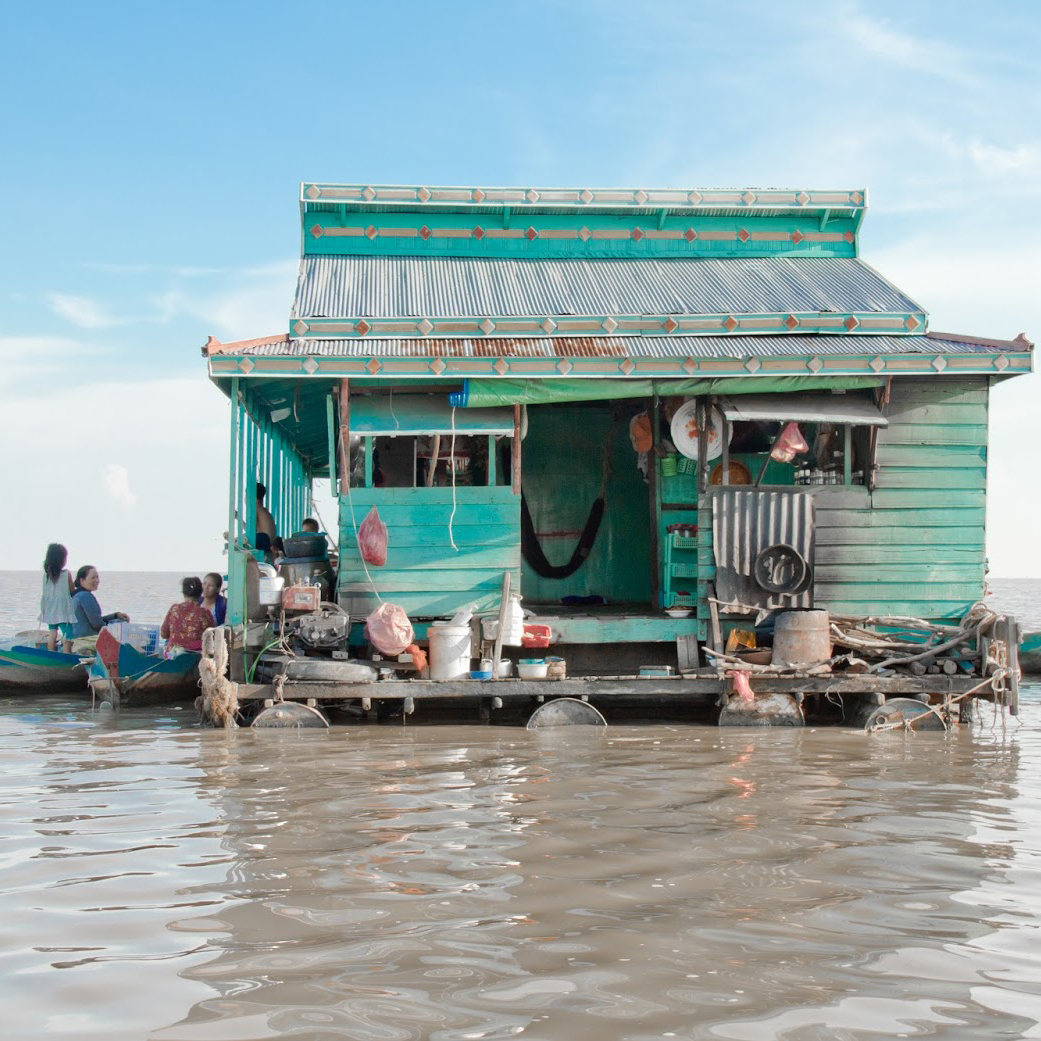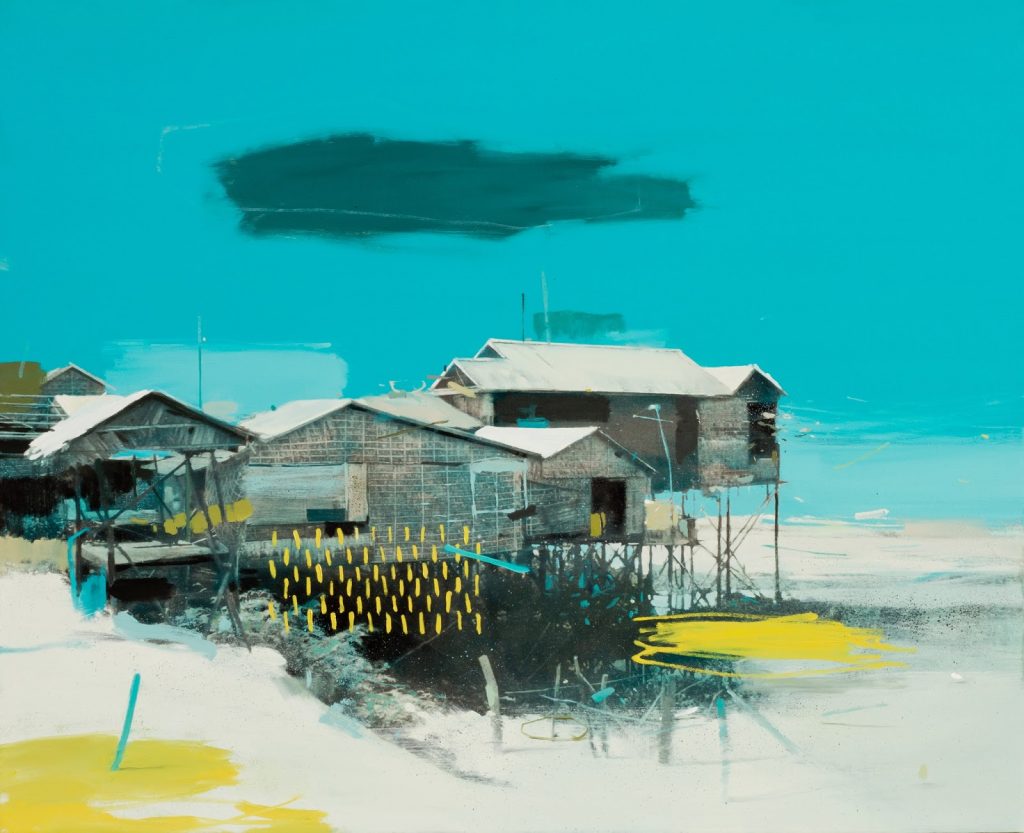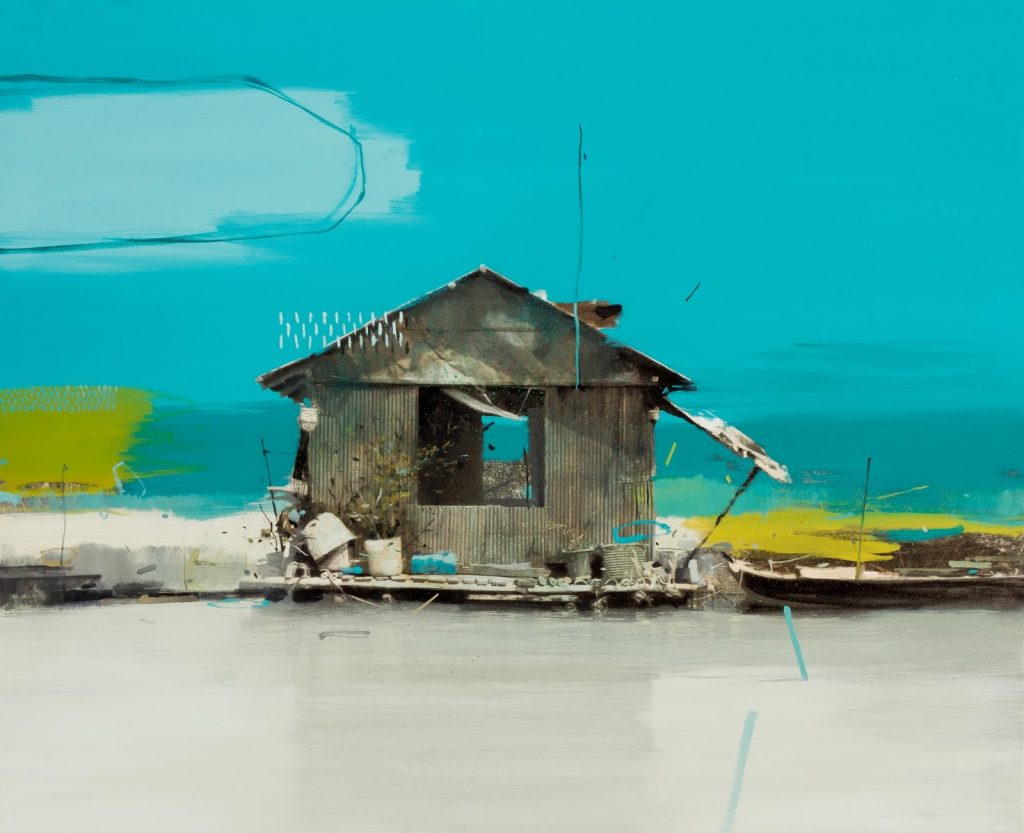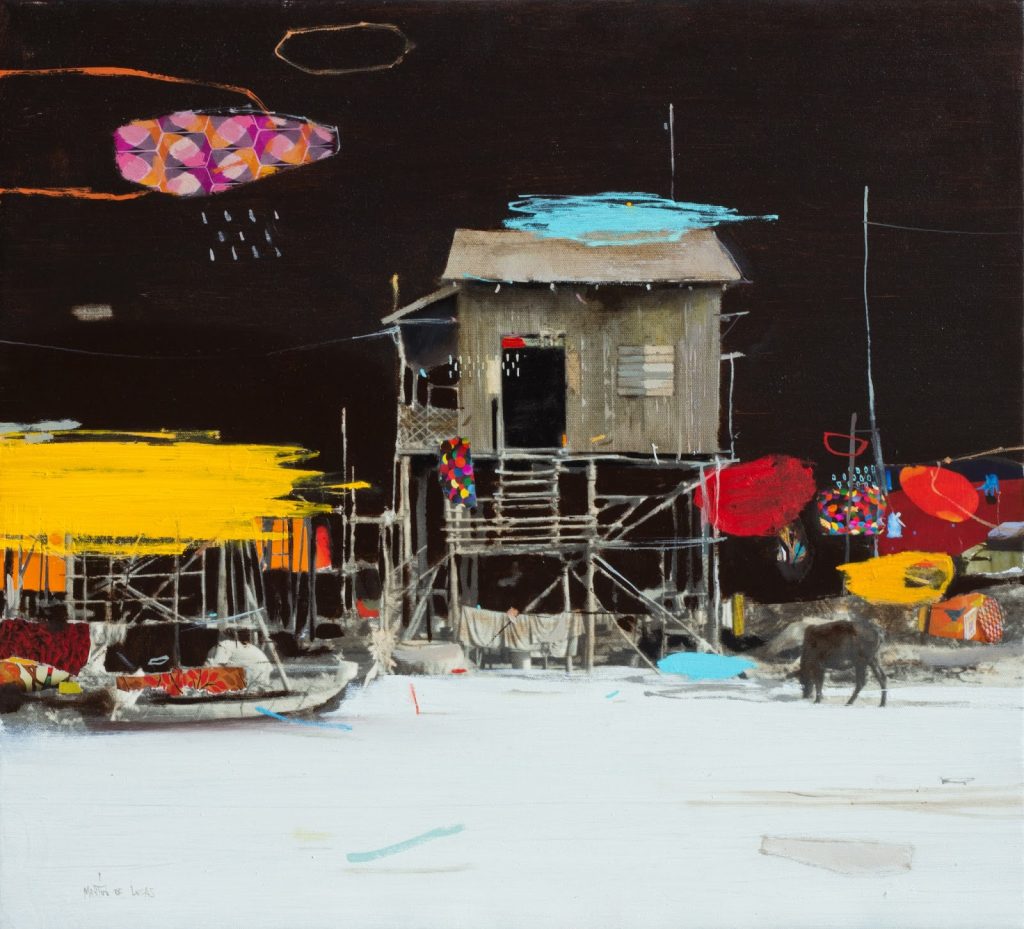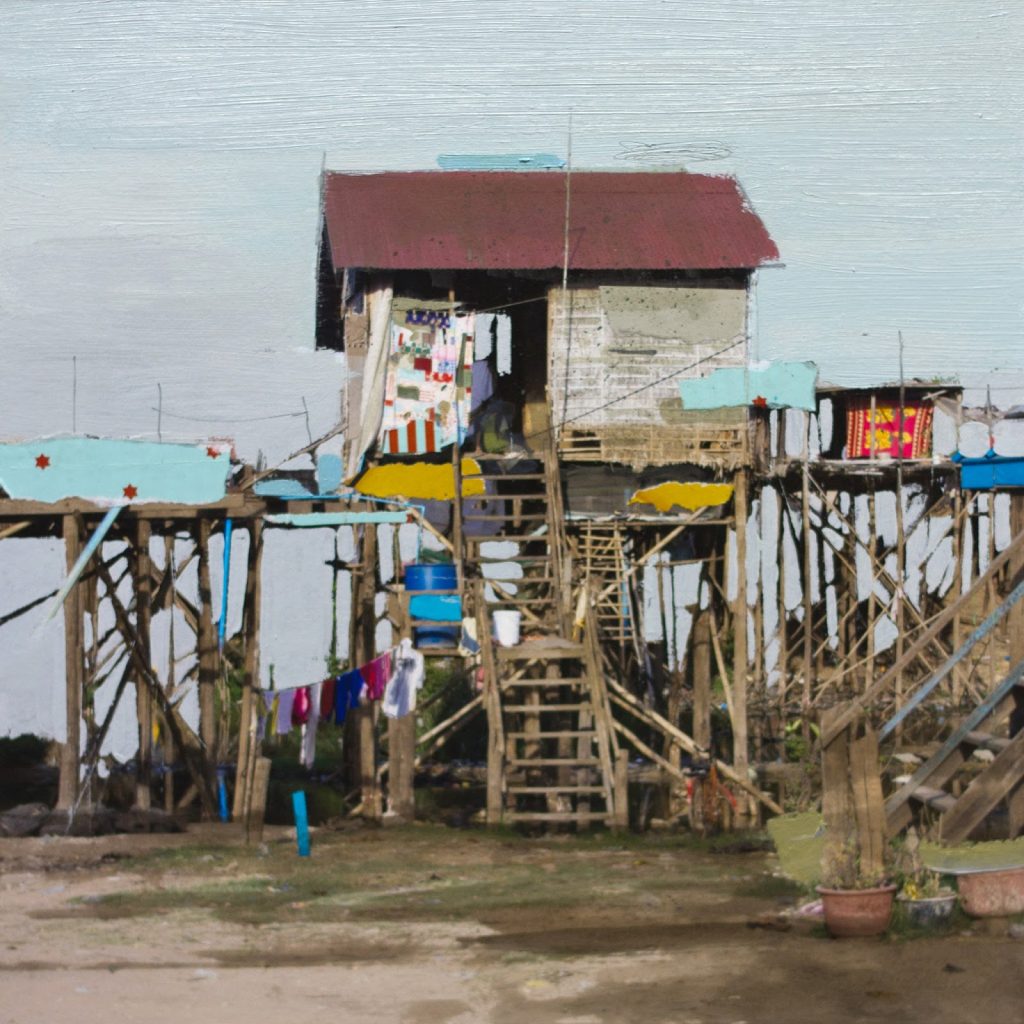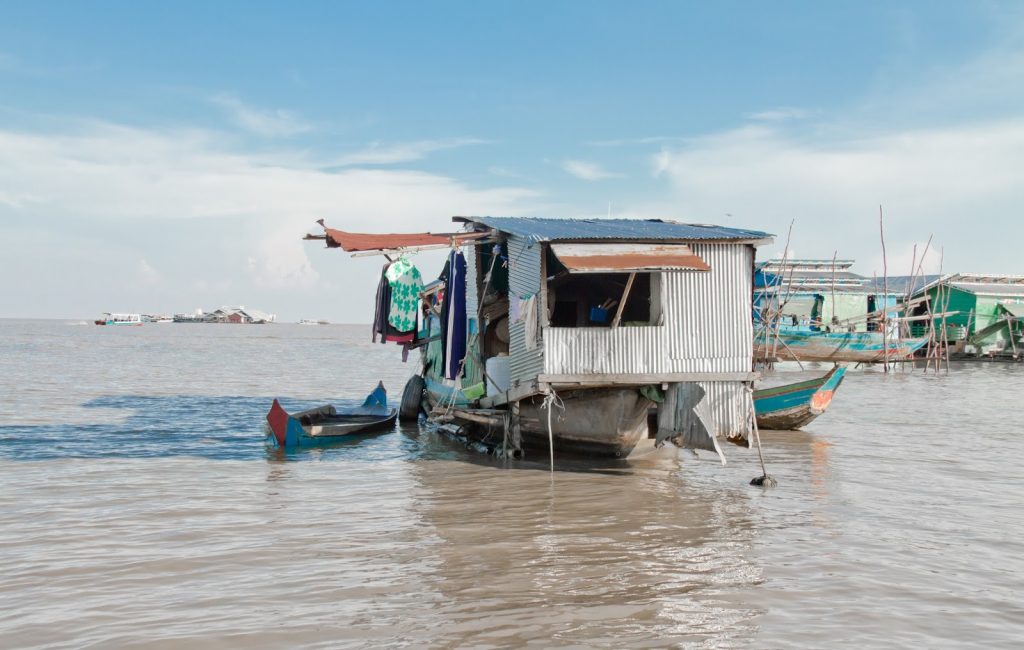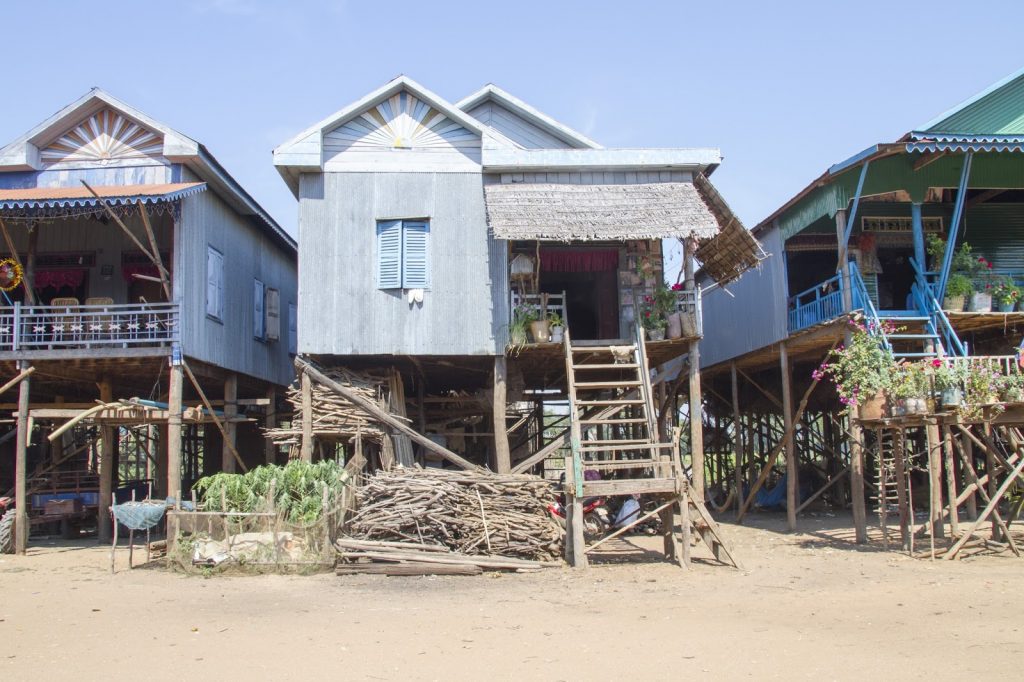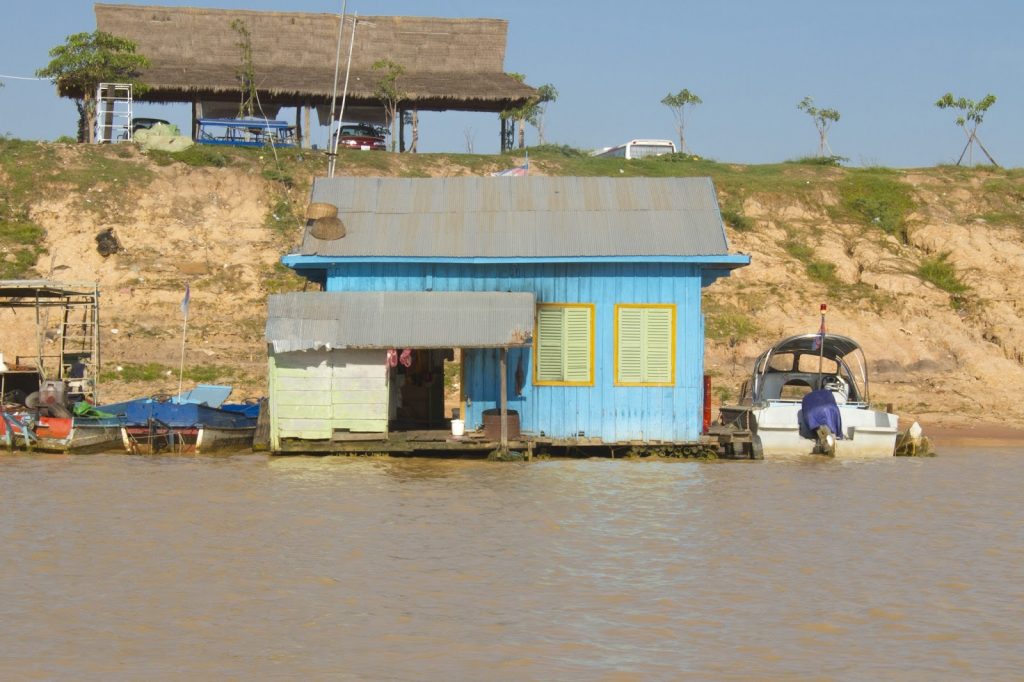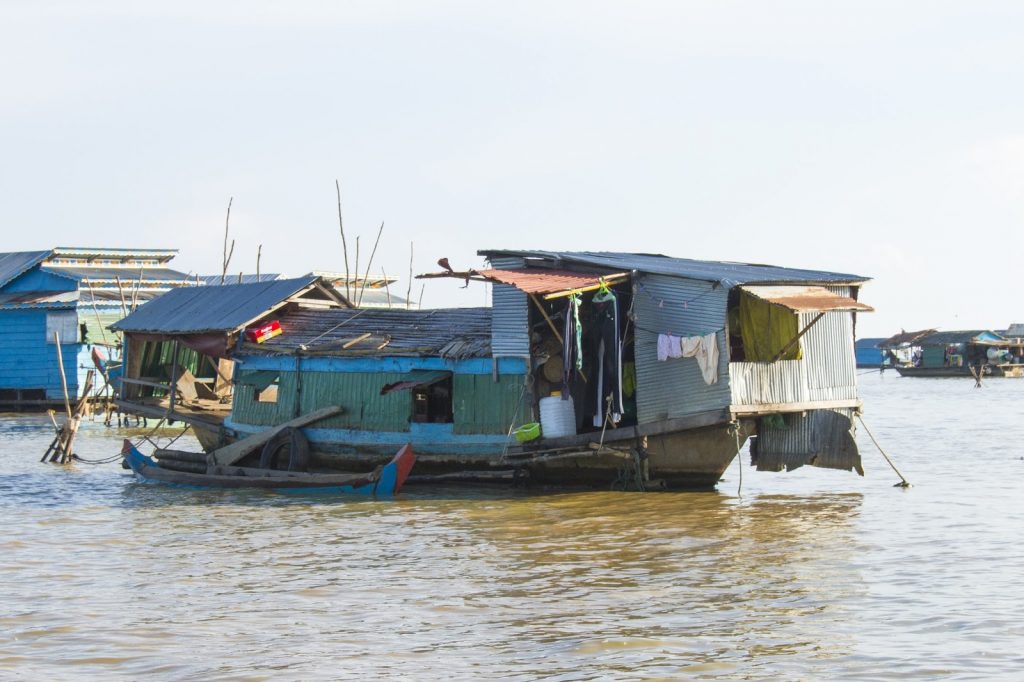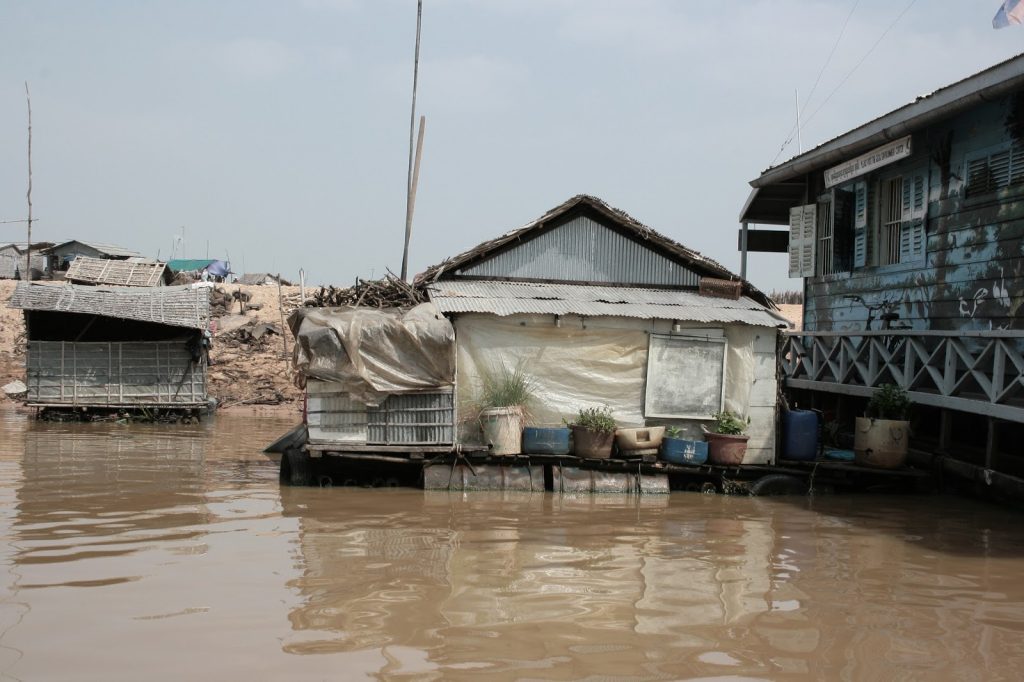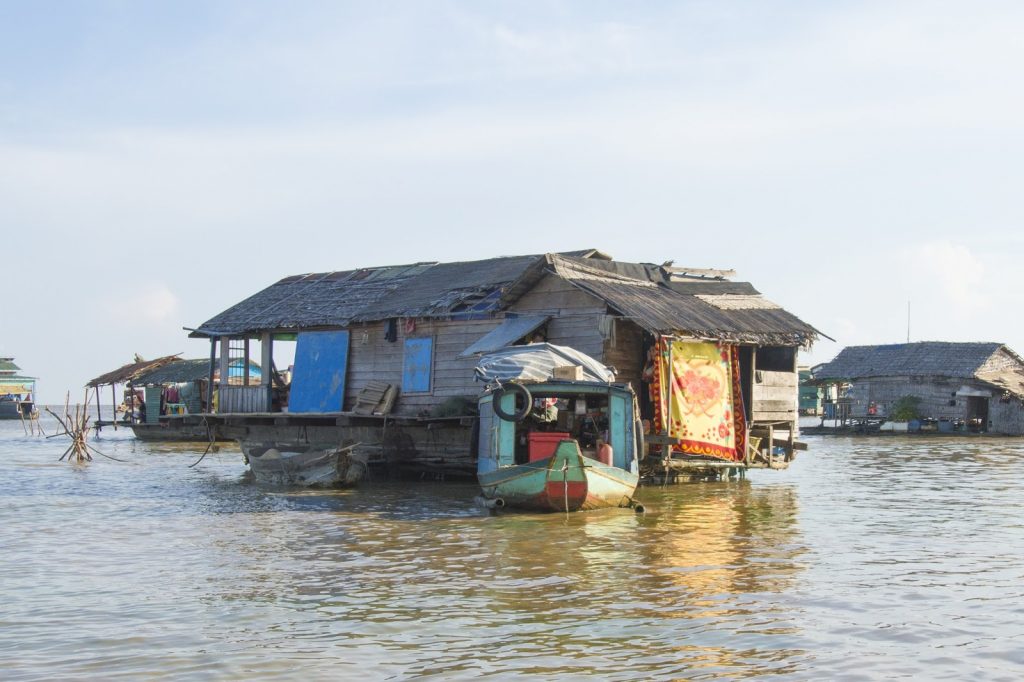“The Floating Village
is the portrait of an humanity,
a way of life,
precarious,
but in balance,
like a hammock that stands
on a house that is balanced.
.“La Aldea Flotante
es el retrato de una humanidad,
de una forma de vida,
precaria,
pero en equilibrio,
como una hamaca que se mece
sobre una casa que se balancea.”
Ruben Martín de Lucas
When we first discovered the floating Villages of Tonle Sap and decided to publish them, we found out the challenge of document an urban settlement that is in a constant transformation and it is deeply interconnected with the ecosystem of the Tonle Sap lake because there is barely graphic information, beyond photos. However, the work of Rubén Martín de Lucas and his personal interpretation of the different typologies created around this lakes and other floating villages provides us a particular perspective of this kind of settlement. Ruben’s project owns a deep and extraordinary poetry and describes the individual atmosphere of the floating villages and their integration within the natural landscape.
Cuando encontramos las aldeas flotantes de Tonle Sap y pensamos en publicarlas, descubrimos la dificultad de documentar un proyecto que al ser un asentamiento urbano en constante transformación y profundamente relacionados con el ecosistema del lago Tonle Sap, carecía de información gráfica más allá de fotografías. Sin embargo, el trabajo de Rubén Martín de Lucas y su reinterpretación sobre las distintas tipologías que se han creado en torno a este lago y otras aldeas flotantes nos ofrece una visión particular sobre este tipo de asentamientos. El proyecto de Rubén, de una profundidad poética extraordinaria, describe la atmósfera individual de las aldeas flotantes y su integración en el paisaje natural.
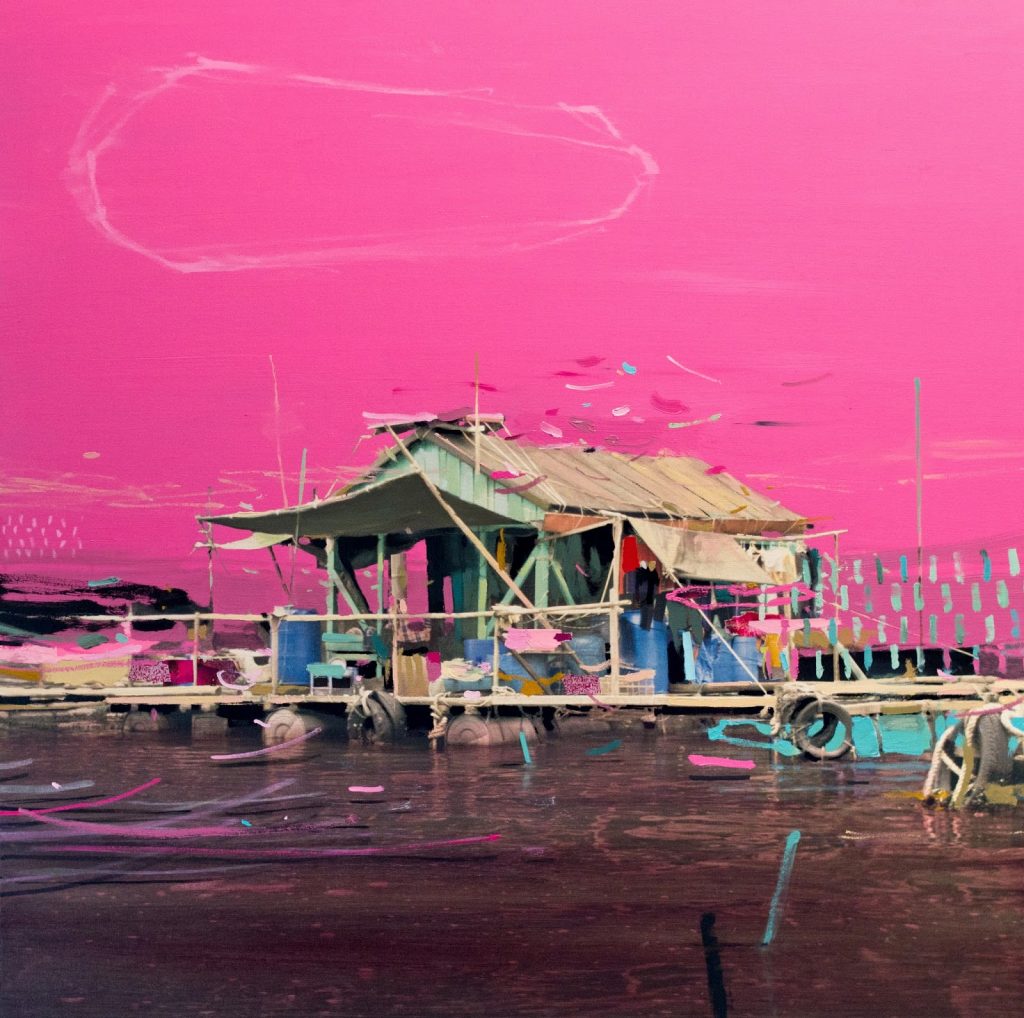
The main feature of Tonle Sap is the ecosystem generated by the two rivers that provide it water: Mekong River and Tonle River. During the dry period, between October and April, the lake has very small dimensions and only on meter deep of water. However, during the seasons of rains, both rivers carry more flow into the sea than the ocean is able to absorb so the water returns to the mainland and sits on the Tonle Sap lake. The dimensions of the lake are multiplied by then from 2,590 square kilometers to 24,605 square kilometers.
The main characteristic of Tonle Sap is the ecosystem generated by the two rivers that feed it: the Mekong River and the Tonle River itself. During the dry season, between October and April, Lake Tonle has very small dimensions and only one meter deep. But during the rainy season the Tonle and Mekong rivers carry more flow into the sea than it is able to absorb so the water returns to the mainland and sits on the Tonle Sap lake. With this process, the extension of the lake is multiplied by ten from 2,590 square kilometers to 24,605 square kilometers.
From the perspective of the urban territory, the raise of the lake during the raining season also drags floating housing grouping them around more permanent constructions and creating nomad settlements. These floating villages remain in the lake until the currents of the rivers are normalized during the dry period and the volume of water descend again.
Desde el punto de vista territorial urbano, la crecida del lago durante la época de lluvias también arrastra varias casas flotantes agrupando éstas en torno a construcciones más permanentes y creando unos asentamientos nómadas que estarán influenciados por las corrientes de los ríos. Estas aldeas flotantes permanecen en el lago hasta que la corriente de los ríos se normaliza durante los meses de sequía y su caudal vuelve a descender.
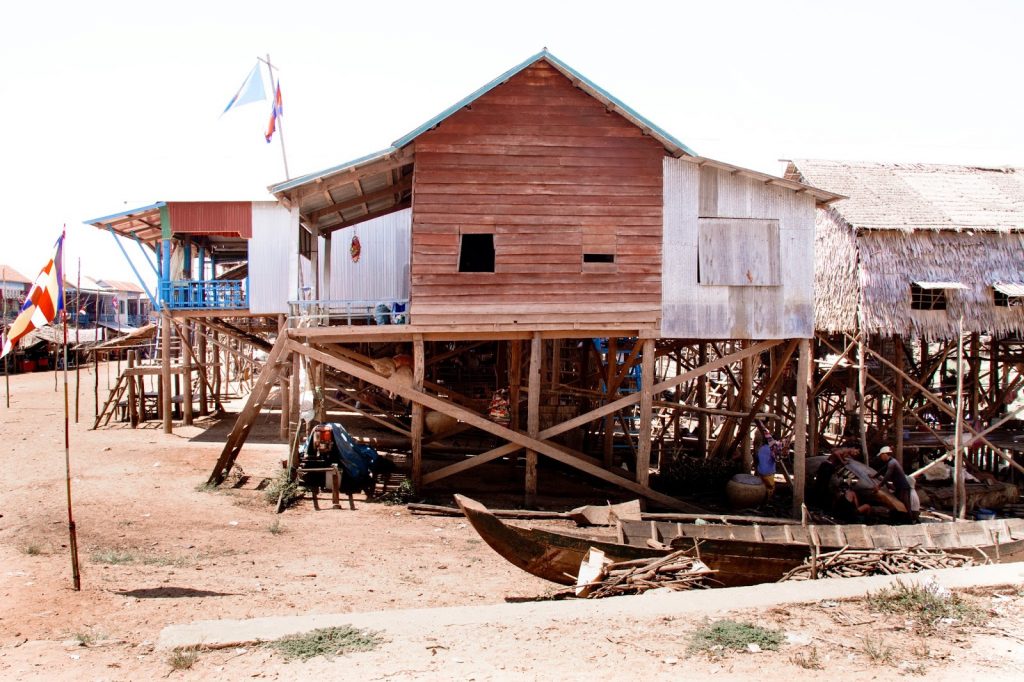
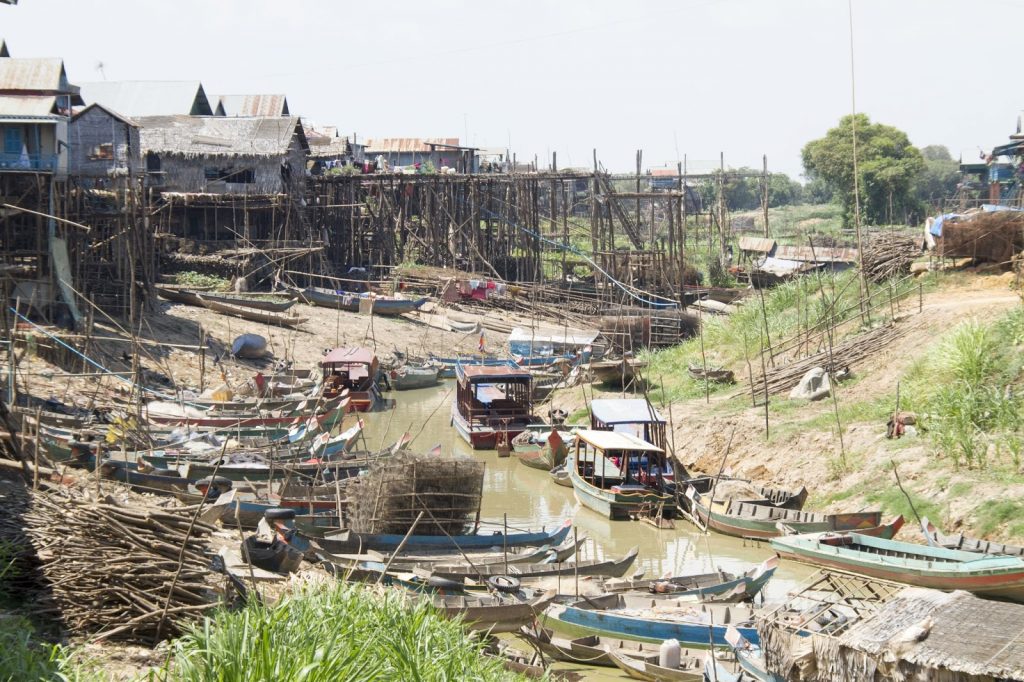
Apart from some permanent religious and civic constructions, the Tonle Sap has two main typologies: the floating houses (nomads) and houses on silts (permanents). Both typologies create an ephemeral landscape connected to the ecology of the place where the interaction with nature is deeply subtle and difficult to represent. This is for us where the work of Rubén Martín de Lucas is very important for us. His paintings manage to abstract the typology features until creating a poetic interpretation of the place. In their canvases, the structure of the houses are intertwined with the landscape and the domestic elements provoking an unitary vision of the home in relation with the environment that it would difficult to reproduce with any conventional graphic document or even in photographies.
Aparte de algunas construcciones religiosas permanentes, el lago Tonle Sap alberga principalmente dos tipologías: Casas flotantes (nómadas) y Casas sobre pilotes (permanentes). Ambas tipologías crean un paisaje efímero conectado con la ecología del lugar en el que su interacción con la naturaleza es profundamente sutil y difícil de representar. Es aquí donde destaca el trabajo de Rubén Martín de Lucas ya que sus pinturas consiguen abstraer las características tipologías hasta crear una interpretación poética de las mismas. En sus lienzos, la estructura de las viviendas se entrelazan con el paisaje y los elementos domésticos provocando una visión unitaria del hogar en relación con el entorno difícilmente reproducible en cualquier otro documento gráfico convencional e incluso en fotografías.
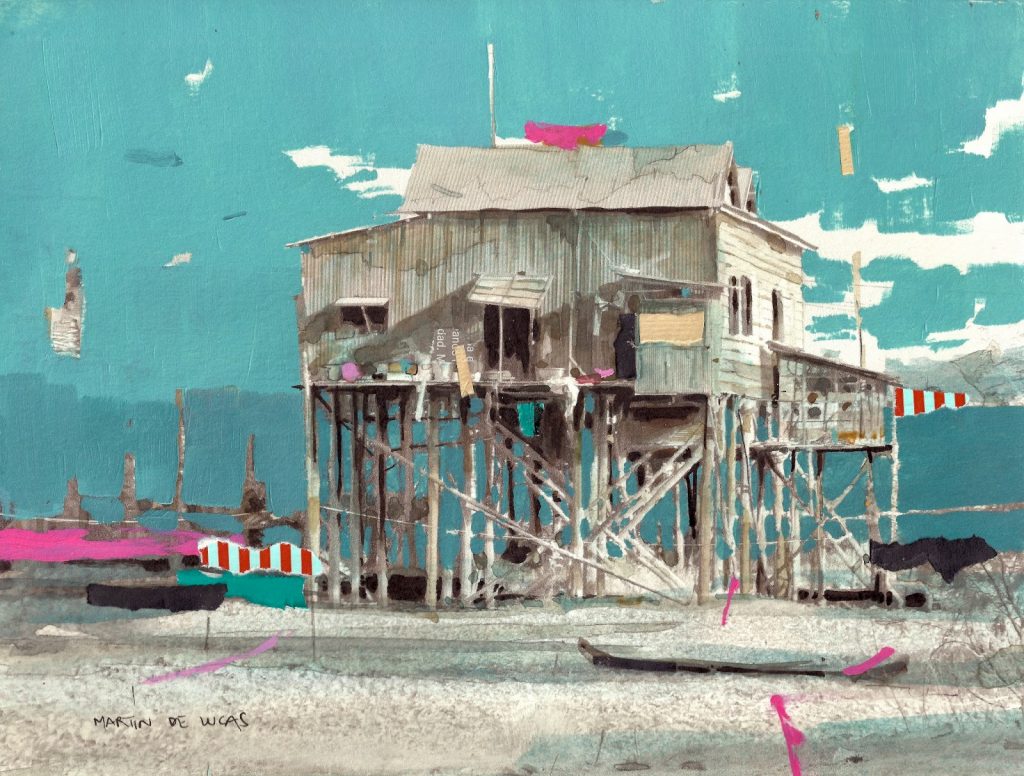
The creation of his personal work is through the digital abstraction of his personal photographies and the later superposition of a new language by painting with oil on digital prints. His paintings allow us to understand the morphology of the different types of housing but also encourage us to imagine the domestic character of these houses and create an empathy with this type of settlements.
El proceso de creación de su obra es a través de la abstracción digital de fotografías propias para una posterior superposición de un nuevo lenguaje pintando con óleo sobre impresiones digitales. Sus pinturas más allá de permitirnos entender la morfología de los distintos tipos de vivienda nos estimula a imaginar el carácter doméstico de estas viviendas y nos generan una empatía con este tipo de asentamientos.
Regarding the two existing typologies, they floating houses stands out due to its structure based on trunks made of bamboo using several layers of this material that allows to create a light framework that floats on the water. The structure is covered with panels of straw creating a shape with a gable roof.
Dentro de las dos tipologías existentes en el lugar, destaca la estructura de las casas flotantes construida a base de troncos de bambú mediante varias capas de este material que permite crear un armazón ligero que flota en el agua. Dicha estructura se termina revistiendo con paneles de paja creando una arquitectura tradicional con cubierta a dos aguas.

he floating villages, despite having a fragile and marginal aspect, offer accommodation to about one million people and the fishing it generates provides around the 16% of the Gross Domestic Product of Cambodia. This information offer an approach of these settlements that go beyond a melancholic view of the place and its relation with nature. We can imagine new possibilities and dialogue with the natural environment in a less defensive way and taking advantage of the ecology can offer us. From a western perspective, we need to get rid of the exotic and paternalistic fascination of the floating villages and learning about their dynamics and typologies in constant transformation. Its hypnotizing image is no more than the execution of a plan that combines urban planning, economy and ecology.
Las Aldeas Flotantes de Tonle Sap, pese a tener un aspecto frágil y marginal, ofrecen alojamiento a alrededor de un millón de personas y la pesca que genera provee a Camboya el 16% de su Producto Interior Bruto. Estos datos ofrecen un acercamiento a estos asentamientos que van más allá de una visión melancólica de la relación para con la naturaleza. Nos hacen imaginar nuevas posibilidades de relacionarnos con los fenómenos naturales de un modo que no sea únicamente defensivo sino aprovechando la oportunidad que el medio nos ofrece. Desde una perspectiva occidental debemos dejar de lado la fascinación puramente exótica y paternalista sobre las aldeas flotantes para aprender de sus dinámicas y su tipología en constante transformación. Su imagen hipnotizadora no es más que la ejecución de un plan que combina magistralmente planificación urbana, economía y ecología.
Note/Nota:
All the images and paintings belong to Rubén Martín de Lucas / Todas las imágenes y pinturas pertenecen a Rubén Martín de Lucas.
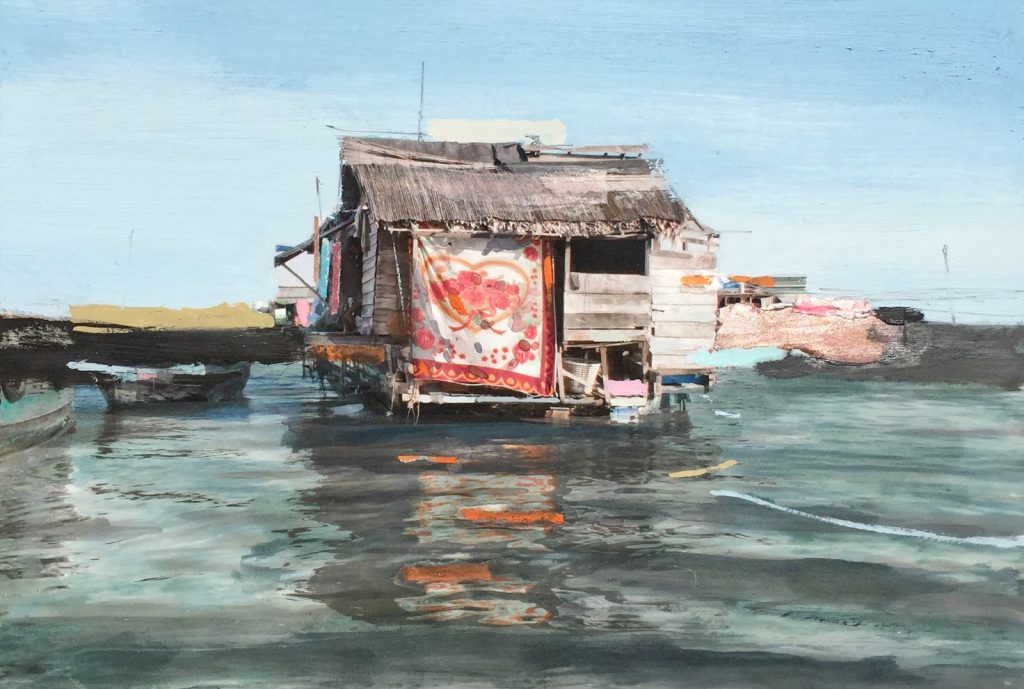
About Rubén Martín de Lucas [Website]
Graduated as a civil engineer, Rubén Martín de Lucas works as a visual artist having his roots in urban art and being of the five founders of Boa Mistura, an Urban Collective who Rubén worked since 2001 to 2015. His work has the axis in Landscape and what Rubén names as “associated behavior”, the links and models that people generate with the territory. The beginning of his work had pictorial character; however, Rubén projects have been evolving to a conceptual and hybrid process working with shares in the landscape or intervened photography.
Licenciado como ingeniero civil, Rubén Martín de Lucas trabaja como artista visual teniendo sus raíces en el arte urbano y siendo uno de los cinco fundadores de Boa Mistura, un colectivo de arte urbano con quién trabajó entre 2001 y 2015. Su trabajo está basado en el paisaje y lo que el propio Rubén denomina su “comportamiento asociado”, los vínculos y modelos de comportamiento que se generan a través del territorio. Partiendo de un carácter pictórico, los proyectos de Rubén han ido evolucionando hacia un proceso más conceptual e híbrido realizando acciones en el paisaje o fotografía intervenida.
